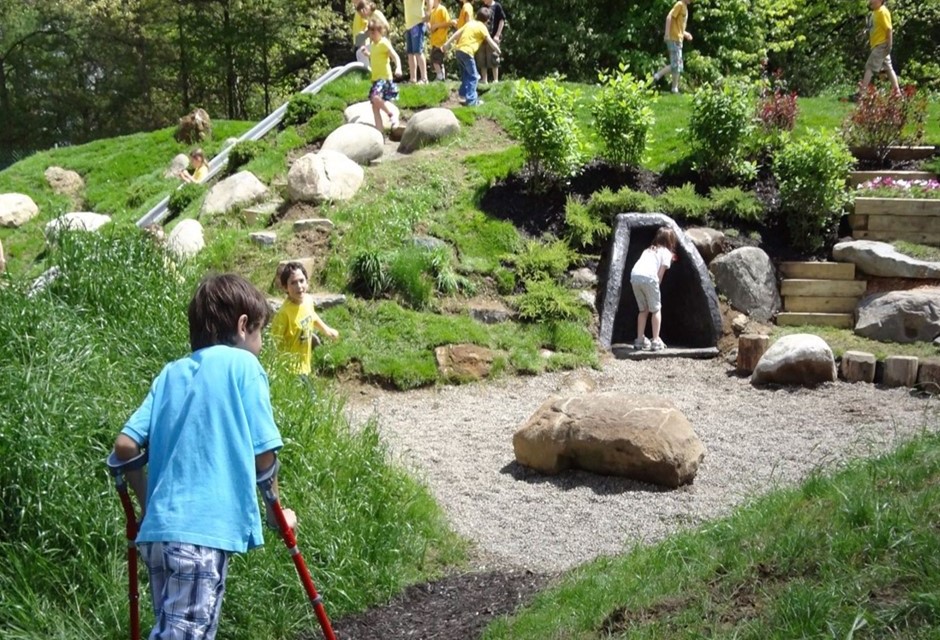When was the last time you jumped on a tree stump, splashed in a stream, skipped a rock, or just sat down to rest on a boulder? These all encompass the concept of natural play, which our senses of exploration and imagination are drawn to. Natural play means “interacting with natural elements of the environment in an imaginative way” and has an extensive list of both health and environmental benefits.
We have a natural instinct to engage in free and explorative play, and kids often get bored of running in circles around a plastic and metal jungle gym. Taking natural play a step further is the idea of intentionally creating natural play spaces in order to stimulate a child to connect with the environment around them.
Having a space to engage in natural play allows a child to exercise both their mind and body. Natural playgrounds give a child the space to roam free or play a new game, with new friends or by themselves. They can escape the structure of school and home and just play outside! Playing independently builds a child’s confidence and playing with others builds important communication and social skills.
While different elements of a natural playground may have distinct features, they aren’t structured in the same fashion as a typical playground. The fluidity of the natural playground allows a child to self-direct their play and get creative. Spending time in nature without being told what to do stimulates all 5 of a child’s senses while simultaneously leading them to learn and discover nature in their own community.
A natural playground or play space aims to ditch the traditional structured playground by integrating elements from the earth in order to create an area to foster creative and open-ended play for a child in their local ecosystem. By using materials including branches, stumps, rocks, boulders, tires, sand, mulch, and soil, a fantastic space can be created to encourage natural play. Common elements include pathways and gardens, streams, obstacle courses/hollow logs, digging space, seats and tables, sand/mulch, and open area.
While this may seem like an overwhelming project to embark on, the beauty is that there is no wrong way to go about it. Each natural play space will look different and is extremely unique to the landscape and ecosystem that it is in!
Here are some tips for starting a natural play area:
- Take an inventory of materials you already have
- Identify an area for your build – a large part of the area should include plain old open space, whether for a game of tag or to just lay in the grass, it is crucial for stimulating creativity
- Research your local ecosystem – highlight nature through the landscape
- Research designers
- Create design with local plants and free/low-cost materials
Helpful Resources
Grounds for Play: What is a Natural Playground
Learn Earth Easy: How to Create a Natural Playground At Home
Written by Ellie Plisko

